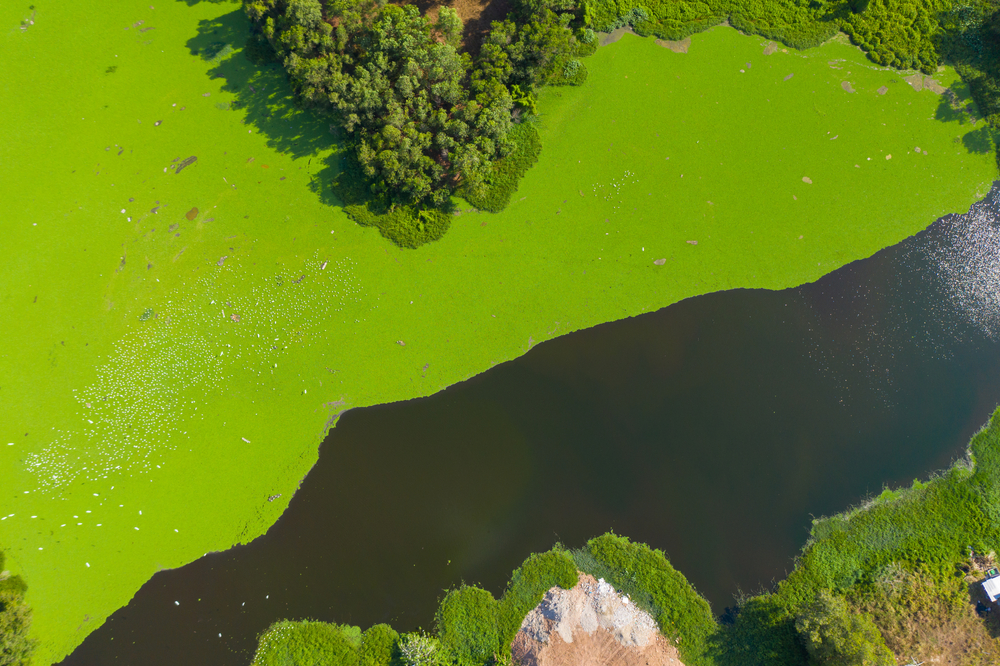On September 28, 2023, the EPA approved Ohio’s plan to reduce the amount of phosphorus flowing from the Maumee River into Lake Erie’s western basin. The plan establishes a total maximum daily load (TMDL) for phosphorus for the Maumee River Watershed.
“The TMDL is a ‘pollution diet’ dictating the maximum amount of pollution the water body can tolerate while still staying clean,” states an Environmental Law & Policy Center (ELPC) press release.
The plan addresses harmful algal blooms (HABs) in the nearshore and open waters of the western basin of Lake Erie that impact drinking water, aquatic life, and recreational access for Ohioans. Algae responsible for HABs can produce toxins that harm drinking water and hinder recreation. The blooms also negatively impact aquatic species by decreasing dissolved oxygen concentrations in the surface water. The plan establishes the total amount of phosphorus that the western basin of Lake Erie can receive and remain healthy.
“Agriculture is a major uncontrolled contributor to these blooms,” according to an Alliance for the Great Lakes press release.
Algae blooms in this portion of the lake are often so prolific that they’re sometimes visible from space, says Fox 2. The warm shallow waters of this portion of the lake serve “as an incubator for algae and toxin-producing, which gives the lake its trademark green (tint).”
“Ohio’s plan is but one tool that we are using, and I pledge to you that EPA is using and will expand use of other tools,” said EPA Region 5 Administrator Debra Shore in an Agency press release. “Addressing the problem of algal blooms in the western basin of Lake Erie will take all of us. It will take unflagging commitment and resolve. And it will take time.”
The EPA also committed to the use of three other tools to restore Lake Erie:
- Deploying Great Lakes Restoration Initiative resources to support research and projects to decrease nutrient loading to the Maumee River Watershed;
- Working with the Western Lake Erie Partnership in a new role as one of three agency chairs to engage all sectors in collaborative problem-solving; and
- Supporting a broader interagency approach with the Ohio EPA, Ohio Agriculture, the Ohio Department of Natural Resources (DNR), and the states of Indiana and Michigan to expand and coordinate efforts to address HABs in the western basin of Lake Erie.
The action plan is the result of a consent decree signed by Federal Judge James Carr (Northern District of Ohio) in May 2023. The decree “is the result of a negotiated settlement stemming from lawsuits filed by Plaintiffs ELPC and Lucas County Board under the Clean Water Act (CWA) against U.S. EPA in 2019 over the federal agency’s failure to ensure that a TMDL be completed as required by the (CWA),” the ELPC press release adds.
In response to the EPA’s announcement that it has approved the Ohio EPA’s TMDL load, Tom Zimnicki, the Alliance for the Great Lakes’ agriculture and restoration policy director, issued the following statement:
“The Western Basin of Lake Erie is a vital resource to the region. Despite millions of dollars of investment over decades, it remains plagued by chronic harmful algal blooms. A TMDL is an important tool in combating these blooms and the nutrients that feed them. However, in its decision, U.S. EPA has doubled down on the same tired, status quo approach that led Ohio to need a TMDL in the first place.
“As it stands, the approved TMDL does not address crucial elements needed to improve Lake Erie water quality. We remain committed to protecting and restoring Lake Erie for those who depend on it, and we will continue to advocate for stronger standards and programs in Ohio to address nutrient pollution.”

